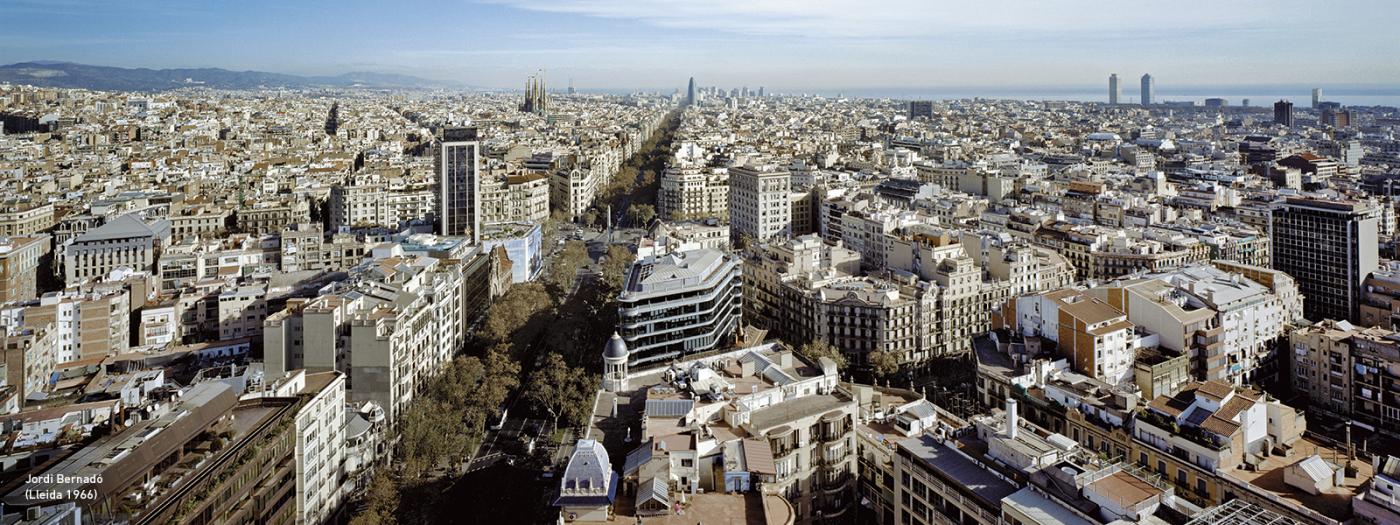Titular Professors
Professors
Title of architect or building engineer.
With this seminar we expect students to:
- Be aware of the role of the architect in current social challenges
- Expand their knowledge of different ways of dwelling and city models
- Provide tools for reflection and intervention around the built environment
- Provide tools to analyze the social context and include citizens to the design process
These statements raise new questions to be considered. We have to redefine the conventional role of the architect in this equation. It is also important to assess the real impact of architecture on social relations, among the good intentions announced by (good-hearted or fraudster) architects and developers.
We defend that users should be involved in the architectural process that shapes the spaces that they will inhabit. Different strategies are needed to engage people in the each stage. Yet, we cannot think of "people" as a cohesive group with a single mindset. The same space can be seen in opposite ways by groups that have contradictory interests.
We will look closer to certain typologies of spaces that have a deep relation with social relations, like collective housing and public space. Thence, we will connect will broader theories: from the Right to Housing to the Right to the City.
In this short seminar students will be introduced to these questions and some tools to be used in their projects, as well as cases of architectural projects where the topics are very present.
The course will consist of the following activities:
A. Lectures and one visit
B. Readings
C. In-class activities
D. Homework
Students are requested to submit all the exercises through the e-study platform, in the subject folder.
System MIAD for grading exercises:
0 - 4.9 Fail (this means that the tutor will have to ask the student to submit a supplementary work).
5.0 - 6.9 Pass.
7.0 - 8.9 Good.
9.0 - 10 Excellent/Distinction.
The evaluation system is as follows:
- Individual or group work: 40%
- Public presentation of works: 40%
- Participation in class: 20%
- BOHIGAS, O. «La ciudad como espacio proyectado.» in "La arquitectura del espacio público", de José Ramón Moreno García. Sevilla, 1999.
- CIRIANI, H. «La "pièce urbaine".» in "La arquitectura del espacio público", de MORENO GARCÍA J. R. Sevilla, 1999. CASANOVAS, M. M. «Hacia una nueva cultura urbana para el espacio público: la experiencia de Barcelona (1979-2003).»
- Revista: Identidades: territorio, cultura, patrimonio. 2005.
- COENEN, J. «Reflexiones y experiencias sobre el espacio público.» in "La arquitectura del espacio público", de MORENO GARCÍA J. R. Sevilla, 1999.
- MONTEVERDI, A. M. «Mappeando superficies.» Xanela. Comunidad tecnoescénica.
- NOBEL, W. «El espacio público ha muerto. Viva el espacio público.» in "La arquitectura del espacio público", de MORENO GARCÍA, J. R. Sevilla, 1999.
- PAZ ARELLANO, P. «El centro histórico como espacio semiótico.» Magazine: Redalyc/Cuicuilco. 2002.
- STAVRIDES, S. (2016) Hacia la ciudad de umbrales, Madrid: Akal.
- Simões AELBRETCH, P. (2016) "Fourth places: the contemporary public settings for informal social interaction among strangers" in Journal of Urban Design, vol. 21, nº 1, pp. 124-152.
- Brandão, Pedro La ética y las profesiones del diseño de la ciudad. Convicciones, Responsabilidad e Interdisciplinaridad. Rastros de la Identidad profesional en el Diseño Urbano Barcelona, Universitat de Barcelona, Resum de la Tesi Doctoral, 2007
- Carmona, M; Health, Tim; Oc, Taner; Tiesdell, Steve Public Places Urban Spaces The Dimensions of Urban Design Oxford, Architectural Press, 2003
- Carr, S; Francis, M; Rivlin, L.G; Stone, A.M. Public Space Cambridge University Press, 1992
- Guàrdia, Manuel; Monclús, Francisco Javier; Oyón, José Luis (dir.) Atlas histórico de ciudades europeas Barcelona, Centre de Cultura Contemporània de Barcelona, 1994
